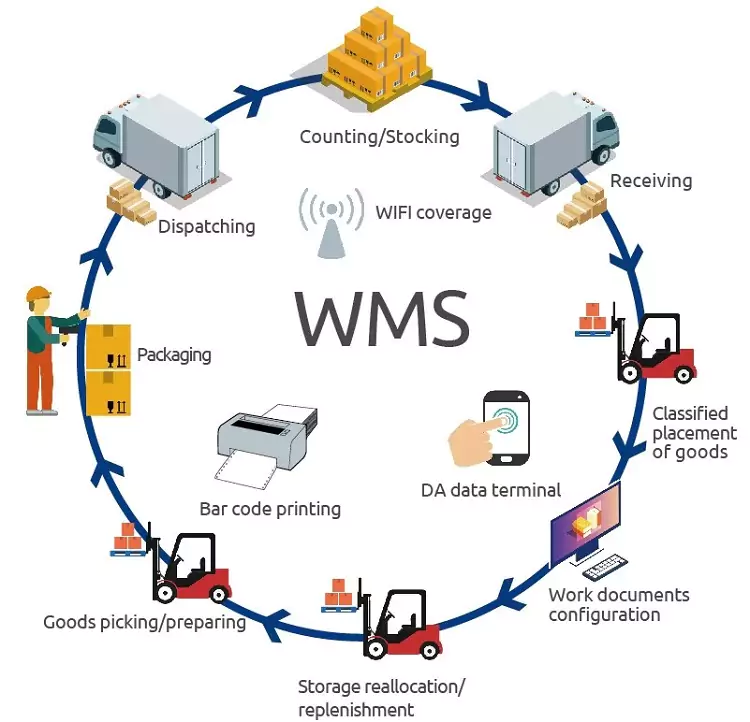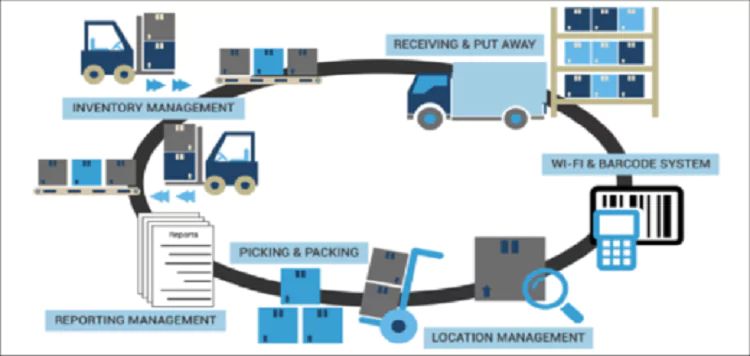Efficient warehouse operations are vital for businesses to meet customer demands, optimize inventory management, and ensure smooth order fulfillment. In today’s digital era, warehouse management software has emerged as a powerful tool for streamlining warehouse operations and optimizing supply chain management. This article will explore the key benefits and features of this management software and how it can be used to improve warehouse efficiency and productivity.
What is Warehouse Management Software?
Warehouse management software (WMS) is a digital solution that enables businesses to manage and optimize warehouse operations, including inventory tracking, order management, and logistics. WMS typically utilizes advanced technologies, such as radio frequency identification (RFID), barcode scanning, and automated data collection, to streamline warehouse processes and improve accuracy and efficiency.
Benefits of Warehouse Management Software
Inventory Management: Warehouse management software enables businesses to manage their inventory levels more effectively, reducing the risk of stockouts or overstocks. WMS can provide real-time visibility of inventory levels, automate inventory tracking and replenishment, and generate detailed inventory reports to inform decision-making.

Order Management: WMS can help businesses manage their orders more efficiently, from receiving and processing orders to picking, packing, and shipping. WMS can automate order fulfillment processes, reducing errors and delays, and providing real-time order tracking and status updates.
Improved Accuracy: WMS utilizes advanced technologies, such as RFID and barcode scanning, to improve data accuracy and reduce errors. This results in improved inventory accuracy, order accuracy, and overall warehouse efficiency.
Cost Savings: By streamlining warehouse operations and reducing errors, WMS can help businesses save costs associated with inventory management, order fulfillment, and labor costs. WMS can also optimize warehouse space utilization, reducing the need for additional warehouse space or costly off-site storage.
Features of Warehouse Management Software
Inventory Tracking: WMS provides real-time visibility of inventory levels, enabling businesses to track inventory levels, locations, and movements, reducing the risk of stockouts or overstocks.
Order Management: WMS can automate order processing, from receiving and processing orders to picking, packing, and shipping, reducing errors and delays, and providing real-time order tracking and status updates.
Automated Data Collection: WMS utilizes advanced technologies, such as RFID and barcode scanning, to automate data collection and improve data accuracy.
Reporting and Analytics: WMS generates detailed reports and analytics, enabling businesses to monitor inventory levels, order fulfillment, and warehouse performance, and identify areas for improvement.
Integration with other Systems: WMS can integrate with other systems, such as enterprise resource planning (ERP) software, transportation management systems (TMS), and customer relationship management (CRM) software, to provide a complete end-to-end solution for supply chain management.
Implementing Warehouse Management Software
Implementing WMS requires careful planning, preparation, and training. Businesses should evaluate their warehouse processes, identify areas for improvement, and select a WMS solution that aligns with their business needs and goals. Proper training and onboarding of staff are also critical to ensure successful implementation and adoption of WMS.
Conclusion
Warehouse management software is a powerful tool for optimizing warehouse operations, improving supply chain management, and maximizing efficiency and productivity. With advanced features such as inventory tracking, order management, and automated data collection, WMS can provide real-time visibility of warehouse performance, reduce errors, and save costs.
Businesses should carefully evaluate their warehouse processes, select a WMS solution that aligns with their needs, and provide proper training and onboarding of staff to ensure successful implementation and adoption of WMS. By harnessing the power of WMS, businesses can achieve significant improvements in warehouse efficiency and productivity, ultimately leading to increased customer satisfaction and profitability.

Mark Thompson, a seasoned pest controller, is renowned for his expertise in keeping homes and businesses free from unwanted intruders. With a passion for environmental sustainability and a deep understanding of pest behavior, Mark has become a trusted authority in the industry.
